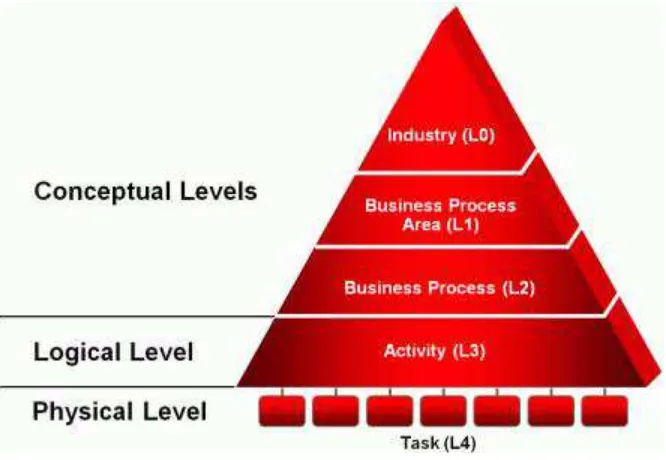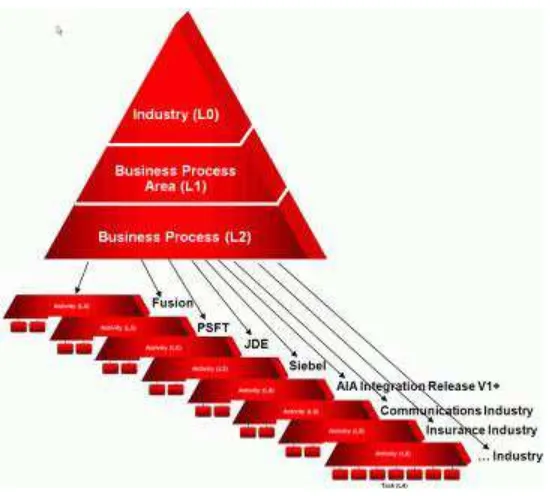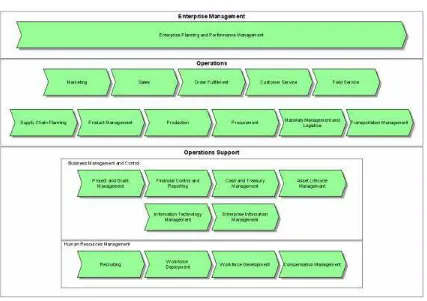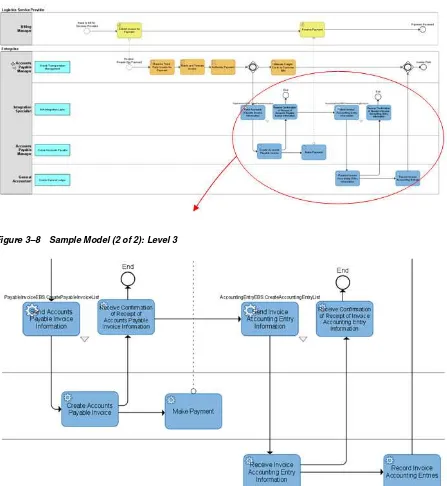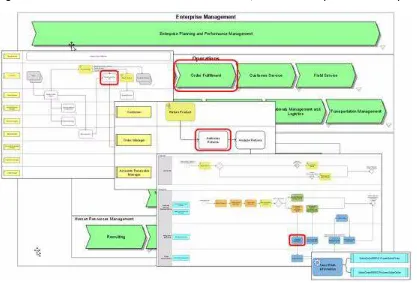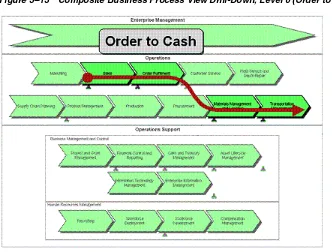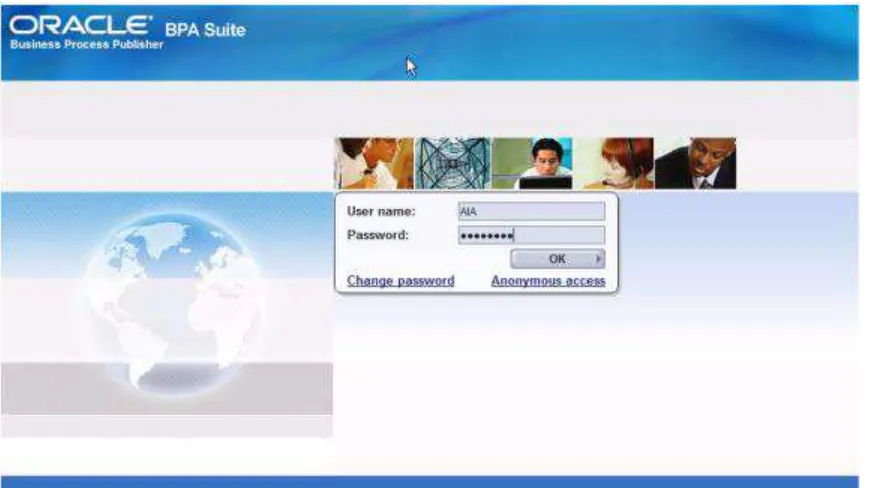Oracle® Fusion Middleware
Reference Process Models User's Guide for Oracle Application
Integration Architecture Foundation Pack
11
g
Release 1 (11.1.1.5.0)
E17368-03Oracle Fusion Middleware Reference Process Models User's Guide for Oracle Application Integration Architecture Foundation Pack, 11g Release 1 (11.1.1.5.0)
E17368-03
Copyright © 2011, Oracle and/or its affiliates. All rights reserved.
Primary Author: Rosemarie Hall
This software and related documentation are provided under a license agreement containing restrictions on use and disclosure and are protected by intellectual property laws. Except as expressly permitted in your license agreement or allowed by law, you may not use, copy, reproduce, translate, broadcast, modify, license, transmit, distribute, exhibit, perform, publish, or display any part, in any form, or by any means. Reverse engineering, disassembly, or decompilation of this software, unless required by law for interoperability, is prohibited.
The information contained herein is subject to change without notice and is not warranted to be error-free. If you find any errors, please report them to us in writing.
If this software or related documentation is delivered to the U.S. Government or anyone licensing it on behalf of the U.S. Government, the following notice is applicable:
U.S. GOVERNMENT RIGHTS Programs, software, databases, and related documentation and technical data delivered to U.S. Government customers are "commercial computer software" or "commercial technical data" pursuant to the applicable Federal Acquisition Regulation and agency-specific supplemental regulations. As such, the use, duplication, disclosure, modification, and adaptation shall be subject to the restrictions and license terms set forth in the applicable Government contract, and, to the extent applicable by the terms of the Government contract, the additional rights set forth in FAR 52.227-19, Commercial Computer Software License (December 2007). Oracle USA, Inc., 500 Oracle Parkway, Redwood City, CA 94065.
This software is developed for general use in a variety of information management applications. It is not developed or intended for use in any inherently dangerous applications, including applications which may create a risk of personal injury. If you use this software in dangerous applications, then you shall be responsible to take all appropriate fail-safe, backup, redundancy, and other measures to ensure the safe use of this software. Oracle Corporation and its affiliates disclaim any liability for any damages caused by use of this software in dangerous applications.
Oracle is a registered trademark of Oracle Corporation and/or its affiliates. Other names may be trademarks of their respective owners.
iii
Documentation Accessibility ... vi
Related Documents ... vi
Conventions ... vi
1
Oracle Business Process Modeling and Analysis Overview
1.1 Our Understanding of Business Process Management ... 1-1 1.2 What is the Challenge?... 1-1 1.3 What is the Answer?... 1-2 1.4 What is a Business Process?... 1-2
2
Modeling Approach and Methodology
2.1 Oracle's Approach to Business Process Modeling and Analysis (BPA) ... 2-1 2.2 Methodology and Organization ... 2-1 2.2.1 Authoritative and Guiding Sources for Industry Process Best Practices ... 2-3
3
Modeling Standards and Notation
3.1 Level 0... 3-1 3.2 Level 1... 3-2 3.3 Level 2... 3-3 3.4 Level 3... 3-4 3.5 Level 4... 3-6 3.6 Functional Allocation Diagram... 3-6
4
Modeling Tool and Viewer
4.1 Overview of the Modeling Tool and Viewer ... 4-1 4.2 Describing the Modeling Tool and Viewer User Experience ... 4-2
iv
List of Figures
2–1 Hierarchical Organization of Model Content ... 2-2 2–2 Multiple Sets of Implementation-Specific Models ... 2-3 3–1 Sample Model: Level 0 ... 3-2 3–11 Allowable Symbols: FAD... 3-6 3–12 Functional Business Process View Drill-down, All Four Levels (Order Fulfillment) and the
FAD 3-7
v
Preface
Welcome to Oracle Fusion Middleware Reference Process Models User's Guide for Oracle Application Integration Architecture Foundation Pack 11g Release 1 (11.1.1.5.0) .
Oracle Application Integration Architecture (AIA) provides the following guides and resources for this release:
Oracle AIA Guides
■ Oracle Fusion Middleware Installation and Upgrade Guide for Oracle Application
Integration Architecture Foundation Pack 11g Release 1 (11.1.1.5.0)
■ Oracle Fusion Middleware Concepts and Technologies Guide for Oracle Application
Integration Architecture Foundation Pack 11g Release 1 (11.1.1.5.0)
■ Oracle Fusion Middleware Developer's Guide for Oracle Application Integration
Architecture Foundation Pack 11g Release 1 (11.1.1.5.0)
■ Oracle Fusion Middleware Infrastructure Components and Utilities User's Guide for
Oracle Application Integration Architecture Foundation Pack 11g Release 1 (11.1.1.5.0)
■ Oracle Fusion Middleware Reference Process Models User's Guide for Oracle Application
Integration Architecture Foundation Pack 11g Release 1 (11.1.1.5.0)
■ Oracle Fusion Middleware Migration Guide for Oracle Application Integration
Architecture Foundation Pack 11g Release 1 (11.1.1.5.0)
■ Oracle Fusion Middleware Product-to-Guide Index for Oracle Application Integration
Architecture Foundation Pack 11g Release 1 (11.1.1.5.0)
Additional Resources
The following resources are also available:
Resource Location
Release Notes Oracle Technology Network:
http://www.oracle.com/technology/
Documentation updates Oracle Technology Network:
vi
Documentation Accessibility
Our goal is to make Oracle products, services, and supporting documentation accessible to all users, including users that are disabled. To that end, our
documentation includes features that make information available to users of assistive technology. This documentation is available in HTML format, and contains markup to facilitate access by the disabled community. Accessibility standards will continue to evolve over time, and Oracle is actively engaged with other market-leading
technology vendors to address technical obstacles so that our documentation can be accessible to all of our customers. For more information, visit the Oracle Accessibility Program Web site at http://www.oracle.com/accessibility/.
Accessibility of Code Examples in Documentation
Screen readers may not always correctly read the code examples in this document. The conventions for writing code require that closing braces should appear on an
otherwise empty line; however, some screen readers may not always read a line of text that consists solely of a bracket or brace.
Accessibility of Links to External Web Sites in Documentation
This documentation may contain links to Web sites of other companies or
organizations that Oracle does not own or control. Oracle neither evaluates nor makes any representations regarding the accessibility of these Web sites.
Access to Oracle Support
Oracle customers have access to electronic support through My Oracle Support. For information, visit http://www.oracle.com/support/contact.html or visit
http://www.oracle.com/accessibility/support.html if you are hearing impaired.
Related Documents
For more information, see the following documents in the Oracle SOA Suite and Oracle Business Process Management Suite 11g Release 1 (11.1.1.5.0) documentation set:
■ Oracle Fusion Middleware Installation Guide for Oracle SOA Suite and Oracle Business
Process Management Suite 11g Release 1 (11.1.1.5.0)
■ Oracle Fusion Middleware Administrator's Guide for Oracle SOA Suite and Oracle
Business Process Management Suite 11g Release 1 (11.1.1.5.0)
■ Oracle Fusion Middleware Developer's Guide for Oracle SOA Suite 11g Release 1
(11.1.1.5.0)
■ Oracle Fusion Middleware Security and Administrator's Guide for Web Services 11g
Release 1 (11.1.1.5.0)
■ Oracle Fusion Middleware User Guide for Oracle Enterprise Repository 11g Release 1
(11.1.1.5.0)
Conventions
vii Convention Meaning
boldface Boldface type indicates graphical user interface elements associated with an action, or terms defined in text or the glossary.
italic Italic type indicates book titles, emphasis, or placeholder variables for which you supply particular values.
1
Oracle Business Process Modeling and Analysis Overview 1-1
1
Oracle Business Process Modeling and
Analysis Overview
This chapter discusses the AIA Reference Process Models delivered with an Oracle Application Integration Architecture Release.
Refer to My Oracle Support note 824633.1 titled Oracle Application Integration Architecture 2.0.1 - 11gR1x: List of Delivered Reference Process Models for a complete list of models delivered with an AIA release.
This chapter includes the following sections:
■ Section 1.1, "Our Understanding of Business Process Management"
■ Section 1.2, "What is the Challenge?"
■ Section 1.3, "What is the Answer?"
■ Section 1.4, "What is a Business Process?"
1.1 Our Understanding of Business Process Management
Business Process Management (BPM) includes a set of activities that organizations perform to either optimize their business processes or adapt them to new
organizational needs.
Important elements include business process modeling and analysis (BPA), orchestration (BPEL), and business activity monitoring (BAM).
This guide focuses on the BPA element, outlines Oracle's approach and methodology, and describes the business process models delivered with an Oracle Application Integration Architecture Release.
1.2 What is the Challenge?
Coordinating business processes is not simple or linear as might be portrayed in the world of traditional task management.
Business is constantly changing, messy, unordered and chaotic; work activities and tasks have to be processed in parallel.
Coordination requires the spawning and asynchronous execution of nested tasks and parallel activities.
What is the Answer?
1-2 Reference Process Models User's Guide
1.3 What is the Answer?
The best way to understand how your business is running is to understand your processes.
The first step in doing that is to model your business processes.
Oracle has created and delivered business process models for those processes supported by Oracle Application Integration Architecture Releases. These business process models will enable you to see and understand how Oracle Application Integration Architecture provides application integration solutions for your business processes.
1.4 What is a Business Process?
A business process is a set of coordinated tasks and activities, involving both human and system interactions, that will lead to accomplishing a set of specific organizational goals. Characteristics of business processes include the following:
■ Large, complex, long running
■ Widely distributed and customized
■ Dynamic
■ Automated
■ Both business and technical in nature
■ Cross boundaries within and between businesses
■ Dependent on and supportive of human intelligence and judgment
2
Modeling Approach and Methodology 2-1
2
Modeling Approach and Methodology
This chapter discusses Oracle's approach to business process modeling and analysis, and explains the methodology and organization of process models.
This section includes the following sections:
■ Section 2.1, "Oracle's Approach to Business Process Modeling and Analysis (BPA)"
■ Section 2.2, "Methodology and Organization"
2.1 Oracle's Approach to Business Process Modeling and Analysis (BPA)
Oracle combines the business view of the business analyst with a glimpse of the technical view of the technical analyst. A standard modeling method is used with technical artifacts added to the models at the lowest level of decomposition.
2.2 Methodology and Organization
Oracle uses accepted standard modeling methods and notation and adds
Oracle-specific information on the most detailed level of the models. Oracle models:
■ Use horizontal, role-based swimlane workflow modeling method based on the Rummler-Brache diagramming technique
■ Are BPMN-compliant at the lowest level
■ Include both human and system lanes
Methodology and Organization
2-2 Reference Process Models User's Guide
Figure 2–1 Hierarchical Organization of Model Content
■ The top three levels are conceptual
■ The conceptualization of SOA services can be observed on third level
■ The fourth level is implementation specific
■ Process integration points and AIA artifacts appear on lowest level
Oracle has created many sets of the lowest level models that correspond to particular implementation solutions, as shown in Figure 2–2. AIA provides solutions that quilt together pieces of application functionality between two or more Oracle product families.
Methodology and Organization
Modeling Approach and Methodology 2-3
Figure 2–2 Multiple Sets of Implementation-Specific Models
Model Types
Oracle creates and delivers the following types of models:
■ Reference Process Models (RPMs) - Horizontal, functionally scoped business process models that depict all of the aspects of the processes supporting a particular function (Marketing, Sales, and Order Fulfillment, for example).
■ Industry Reference Process Models - Industry-specific business process models that combine industry processes with relevant horizontal processes and variations of horizontal processes.
■ Composite Business Flows - End-to-end processes that are comprised of parts of several functional business processes (Order to Cash, Procure to Pay, and Design to Release, for example).
2.2.1 Authoritative and Guiding Sources for Industry Process Best Practices
The TeleManagement Forum enhanced Telecom Operations Map® (eTOM®) was used as a reference to frame the conceptual levels of the Communications business process models.
Oracle continues to determine current external best practice and governing sources and uses them as references to frame and influence our business process models, including:
■ Supply Chain Council (SCOR)
■ Value-Chain Group (VCG)
■ Federal Enterprise Architecture Business Reference Model (FEA)
Methodology and Organization
3
Modeling Standards and Notation 3-1
3
Modeling Standards and Notation
This chapter includes examples of a model for each level as well as a list of the symbols and annotation used on each level.
This chapter includes the following sections:
■ Section 3.1, "Level 0"
■ Section 3.2, "Level 1"
■ Section 3.3, "Level 2"
■ Section 3.4, "Level 3"
■ Section 3.5, "Level 4"
■ Section 3.6, "Functional Allocation Diagram"
3.1 Level 0
Level 1
3-2 Reference Process Models User's Guide
Figure 3–1 Sample Model: Level 0
Figure 3–2 shows the symbols and annotation used on level 0.
Figure 3–2 Allowable Symbols: Level 0
3.2 Level 1
Level 2
Modeling Standards and Notation 3-3
Figure 3–3 Sample Model: Level 1
Figure 3–4 shows the symbols and annotation used on level 1.
Figure 3–4 Allowable Symbols: Level 1
3.3 Level 2
Level 3
3-4 Reference Process Models User's Guide
Figure 3–5 Sample Model: Level 2
Figure 3–6 shows the symbols and annotation used on level 2.
Figure 3–6 Allowable Symbols: Level 2
3.4 Level 3
Level 3
Modeling Standards and Notation 3-5
Figure 3–7 Sample Model (1 of 2): Level 3
Figure 3–8 Sample Model (2 of 2): Level 3
Level 4
3-6 Reference Process Models User's Guide
Figure 3–9 Allowable Symbols: Level 3
3.5 Level 4
Level 4 is not a model level. It is the tasks that appear on the models at level 3; level 4 is the leaves at the bottom of the branch of the tree.
3.6 Functional Allocation Diagram
Like level 4, the Functional Allocation Diagram (FAD) is not a model level. The FAD diagram is use to depict the Enterprise Business Services and operations that are used by the Application Integration Architecture for a particular integration. Figure 3–10 is a sample FAD diagram.
Figure 3–10 Sample FAD Diagram
Figure 3–11 shows the allowable symbols.
Figure 3–11 Allowable Symbols: FAD
Functional and Composite Business Process Views
Functional Allocation Diagram
Modeling Standards and Notation 3-7 Figure 3–12 depicts a functional business process view drilldown for all four levels (Order Fulfillment) as well as the FAD.
Figure 3–12 Functional Business Process View Drill-down, All Four Levels (Order Fulfillment) and the FAD
Our composite business flows depict end-to-end processes that span portions of several functional business processes (Order to Cash, Procure to Pay, and Design to Release, for example).
Functional Allocation Diagram
3-8 Reference Process Models User's Guide
Figure 3–13 Composite Business Process View Drill-Down, Level 0 (Order to Cash)
Figure 3–14 depicts the composite business process view drill-down at level 1 (Order to Cash).
4
Modeling Tool and Viewer 4-1
4
Modeling Tool and Viewer
This chapter provides an overview of the modeling tool and viewer, and describes the modeling tool and viewer user experience.
This chapter includes the following sections:
■ Section 4.1, "Overview of the Modeling Tool and Viewer"
■ Section 4.2, "Describing the Modeling Tool and Viewer User Experience"
4.1 Overview of the Modeling Tool and Viewer
The modeling tool is our own Oracle Business Process Analysis (OBPA) Suite. The components in the OBPA Suite include:
■ Business Process Architect
Standards-based tool for process modeling. Uses various standards-based notations and templates such as BPMN, EPC, and so on.
■ Business Process Repository Server
Server component for sharing the process repository across multiple users in a collaborative environment
■ Business Process Simulator
Tool for simulating the process models based on a set of discrete events to do "what if" analysis
■ Business Process Publisher
Publishes process models to a large audience outside of the core team designing the process models
■ Oracle Extensions for SOA
Allows bi-directional integration with Oracle SOA Suite
The Business Process Architect and the Business Process Repository Server
Describing the Modeling Tool and Viewer User Experience
4-2 Reference Process Models User's Guide
4.2 Describing the Modeling Tool and Viewer User Experience
Following is a walk through of the published model experience.
Logon to the Business Process Publisher:
Your implementation specialist will provide a URL to the logon page, as shown in
Figure 4–1.
Figure 4–1 Business Process Publisher Logon Page
Enter the following information
User name: AIA
Password: Welcome1
Choose a language:
Describing the Modeling Tool and Viewer User Experience
Modeling Tool and Viewer 4-3
Figure 4–2 Business Process Publisher Language Selection
Access Business Process Publisher homepage:
The homepage is displayed, as shown in Figure 4–3, after you select your language and click OK.
Figure 4–3 Business Process Publisher Homepage
Describing the Modeling Tool and Viewer User Experience
4-4 Reference Process Models User's Guide Choose Contents module:
Choose the Contents tab, which is located at the top of your homepage, as shown in
Figure 4–4.
Figure 4–4 Contents Module Selection
Expand groups in Navigation tree:
Click the (+) icon in the Navigation Tree section of the page, as shown in Figure 4–5.
Describing the Modeling Tool and Viewer User Experience
Modeling Tool and Viewer 4-5 Navigate to desired model and click on it:
Model is displayed in model pane.
View model attributes in Model Information pane.
Use view controls, shown in Figure 4–6, to zoom in and zoom out.
Figure 4–6 View Controls
Navigate to a child model by clicking on the 'assignment icon' on the model, or by navigating to a model in the navigation pane, as shown in Figure 4–7.
Figure 4–7 Child Model Navigation
Navigate to Level 3 model:
Describing the Modeling Tool and Viewer User Experience
4-6 Reference Process Models User's Guide
Figure 4–8 Level 3 Model
View object attributes in Object Characteristics pane: Figure 4–9 shows the Object Characteristics pane.
Figure 4–9 Object Characteristics Pane
Access Oracle Enterprise Repository for AIA artifact entry.
Describing the Modeling Tool and Viewer User Experience
Modeling Tool and Viewer 4-7
Figure 4–10 Oracle Enterprise Repository Login Page
Your implementation specialist will provide a User Name and Password for your OER implemented instance.
OER is delivered with Oracle AIA solutions. Our models include references to the AIA integration artifact metadata defined in Oracle Enterprise Repository as well as URL links to those OER entries.
Figure 4–11 is a sample of an AIA Enterprise Business Service artifact entry in Oracle Enterprise Repository.
Describing the Modeling Tool and Viewer User Experience
Index-1
Index
A
artifact entry in OER, 4-7
B
best practices
guiding sources, 2-3 BPA
approach to analysis, 2-1 BPM
approach to modeling, 2-1 challenges, 1-1
definition, 1-2
functional allocation diagram, 3-6 level 0, 3-1
level 1, 3-2 level 2, 3-3 level 3, 3-4 level 4, 3-6
modeling tool user experience, 4-2 notation, 3-1
BPM viewer user experience, 4-2 business process
characteristics, 1-2 definition, 1-2 Business Process Analysis
See BPA
Business Process Architect, 4-1 Business Process Management
See BPM
Business Process Publisher, 4-1 logon, 4-2
Business Process Publisher homepage, 4-3 Business Process Repository Server, 4-1 Business Process Simulator, 4-1
C
composite business process view drill-down at level
1, 3-8
Contents module, 4-4
coordinating business processes, 1-1
L
Composite Business Flows, 2-3 Industry Reference Process Models, 2-3 Reference Process Models (RPMs), 2-3 modeling method, 2-1 Oracle Business Process Analysis
See OBPA
Oracle Business Process Analysis (OBPA) Suite, 4-1 Oracle Enterprise Repository
See OER
Oracle Extensions for SOA, 4-1
R
Rummler-Brache diagramming technique, 2-1
S
Index-2
symbols and annotation level 0, 3-2
level 1, 3-3 level 2, 3-4 level 3, 3-4, 3-5
T
Telecom Operations Map, 2-3 TeleManagement Forum, 2-3
